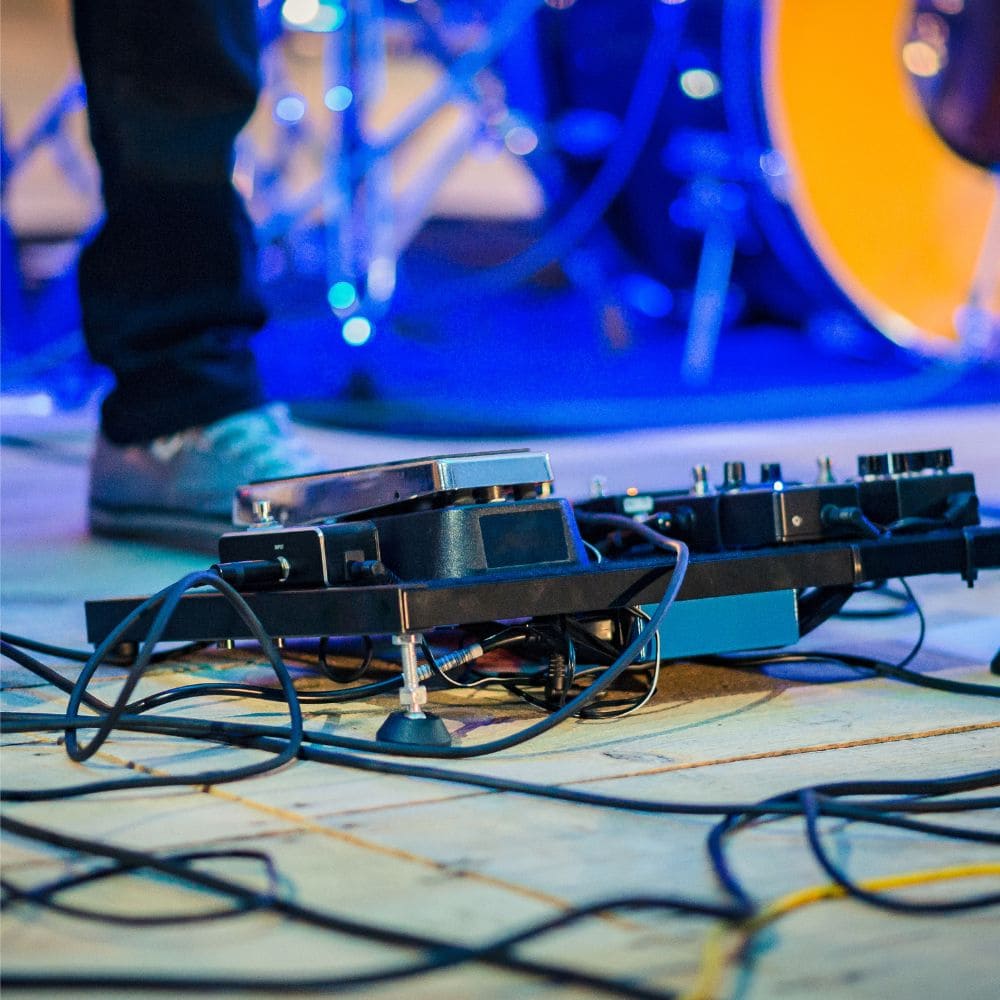Where Do You Put the Envelope Filter in a Pedal Chain?

Welcome to our comprehensive guide on the placement of envelope filters in a guitar pedal chain.
Whether you're a seasoned musician or just starting out, understanding the optimal placement of your envelope filter is crucial to achieving the desired sound and getting the most out of your pedalboard.
In this article, we'll delve into the intricacies of envelope filters, the basics of signal chain placement, the effects order in a pedal chain, and valuable tips for optimizing the placement of your envelope filter.
So, let's dive in and demystify the world of pedalboard configurations and placements!
Answer to the Question
So, where do you put the envelope filter in a pedal chain?
The placement of an envelope filter in a pedal chain is typically between your wah pedal and your distortion pedal. Placing the envelope filter in this position allows for a harmonious integration of the filter's dynamic effects with the tonal variations produced by the wah and distortion pedals.
Additionally, this placement ensures that the envelope filter receives a clean input signal, which is vital for optimal performance and sound output.
Placement of Envelope Filter in a Pedal Chain
Let's start with some fundamentals...
Understanding Envelope Filters
Envelope filters, also known as auto-wah or dynamic filters, are effects pedals that modulate the frequency components of an instrument's sound based on the level of its input signal. The filter's response is determined by the attack and release of the input signal, creating a 'wah' or 'quack' effect that dynamically changes with the player's touch.
This dynamic modulation adds a unique and expressive tonal character to the instrument's sound, making it an essential tool for many guitarists, bassists, and keyboard players.
Signal Chain Basics
The signal chain in a pedalboard refers to the order in which audio signals pass through a series of effects pedals. Understanding the basics of signal chain placement is vital when determining the optimal position for an envelope filter. The signal chain typically begins with the instrument's output, followed by dynamic effects like compressors and wah pedals, then tonal modifiers such as overdrive and distortion, and ends with time-based effects like reverb and delay.
This sequential arrangement ensures that the input signal flows through the pedals in a manner that maximizes the quality and impact of each effect on the overall sound.
Effects Order in a Pedal Chain
The order of effects in a pedal chain significantly influences the resulting sound, and knowing the optimal effects order is crucial for achieving the desired tonal output. The general rule of thumb is to place envelope filters after dynamic effects like wah and before tonal modifiers and time-based effects.
This positioning allows the envelope filter to dynamically modulate the signal before it undergoes tonal modification, resulting in a more pronounced and expressive effect. Understanding the effects order in a pedal chain provides valuable insights into the seamless integration of diverse effects pedals for a cohesive and harmonious sonic experience.
When it comes to setting up a pedal chain, the sequence in which effects are arranged can have a profound impact on the overall sound. Let's dive deeper into the effects order and understand its implications:
- Dynamic Effects First: Placing dynamic effects such as a wah pedal before other modifiers allows them to interact directly with the guitar's signal, resulting in a more responsive and lively tone.
- Envelope Filters vs. Tonal Modifiers: The decision to position envelope filters before tonal modifiers is strategic. This setup enables the envelope filter to capture the dynamic nuances of the signal before tonal adjustments are applied, ensuring a nuanced and expressive output.
- Time-Based Effects: The placement of time-based effects at the end of the chain is essential for creating spacious and atmospheric sounds. These effects work harmoniously when they manipulate the fully processed signal, adding depth and ambiance to the overall tone.
The effects order plays a pivotal role in shaping the tonal palette of a musician. By understanding the rationale behind the placement of different effects, musicians can explore and innovate with diverse sonic textures and tonal possibilities. Let's shed light on the significance of effects order in crafting a rich tonal palette:
- Expressive Dynamics: Carefully arranging effects in the pedal chain ensures that the dynamic capabilities of each effect are fully realized, allowing for greater expressiveness and control over the tonal output.
- Enhanced Articulation: Strategic positioning of effects contributes to enhanced articulation, enabling subtle nuances and detailed articulation to shine through in the final sound.
- Cohesive Soundscapes: A well-structured effects order promotes the creation of cohesive soundscapes, where each effect seamlessly integrates with the next to produce a harmonious sonic experience.
By leveraging the insights offered by effects order, musicians can unleash the full potential of their pedal chains, creating captivating and immersive sonic journeys. The interplay between diverse effects, carefully positioned in the chain, opens up a world of creative possibilities, enabling musicians to sculpt their unique sonic identities with precision and artistry.
Tips for Placement
- Position the envelope filter after the wah pedal to maximize complementary tonal dynamics.
- Experiment with placing the envelope filter before and after distortion pedals to assess the impact on overall tonal output.
- Consider the interaction of the envelope filter with other effects in the chain, such as reverb and delay, to achieve a cohesive sonic expression.
- Use expression pedals to modulate the envelope filter parameters in real-time for dynamic performance.
- Explore different placement options to create unique textures and tonal variations in your sound.
Conclusion
In conclusion, the optimal placement of an envelope filter in a pedal chain significantly influences the dynamics and tonal characteristics of the resulting sound.
Understanding the nuances of envelope filters, the basics of signal chain placement, effects order in a pedal chain, and valuable placement tips equips musicians with the knowledge to achieve a harmonious and expressive integration of envelope filters into their pedalboard configurations.
By carefully considering the signal chain arrangement and the interaction between diverse effects pedals, musicians can unleash a myriad of tonal possibilities, adding depth and personality to their musical expression.
When you're ready to add an envelope filter pedal to your guitar rig, if you don't already have one, then check this out.
*FYI, when you make a qualifying purchase through one of our links, we might receive a small commission from Amazon or other retailers, at no additional cost to you, which helps us to fund this site. It's a way to find what you're looking for while supporting us in the process!
